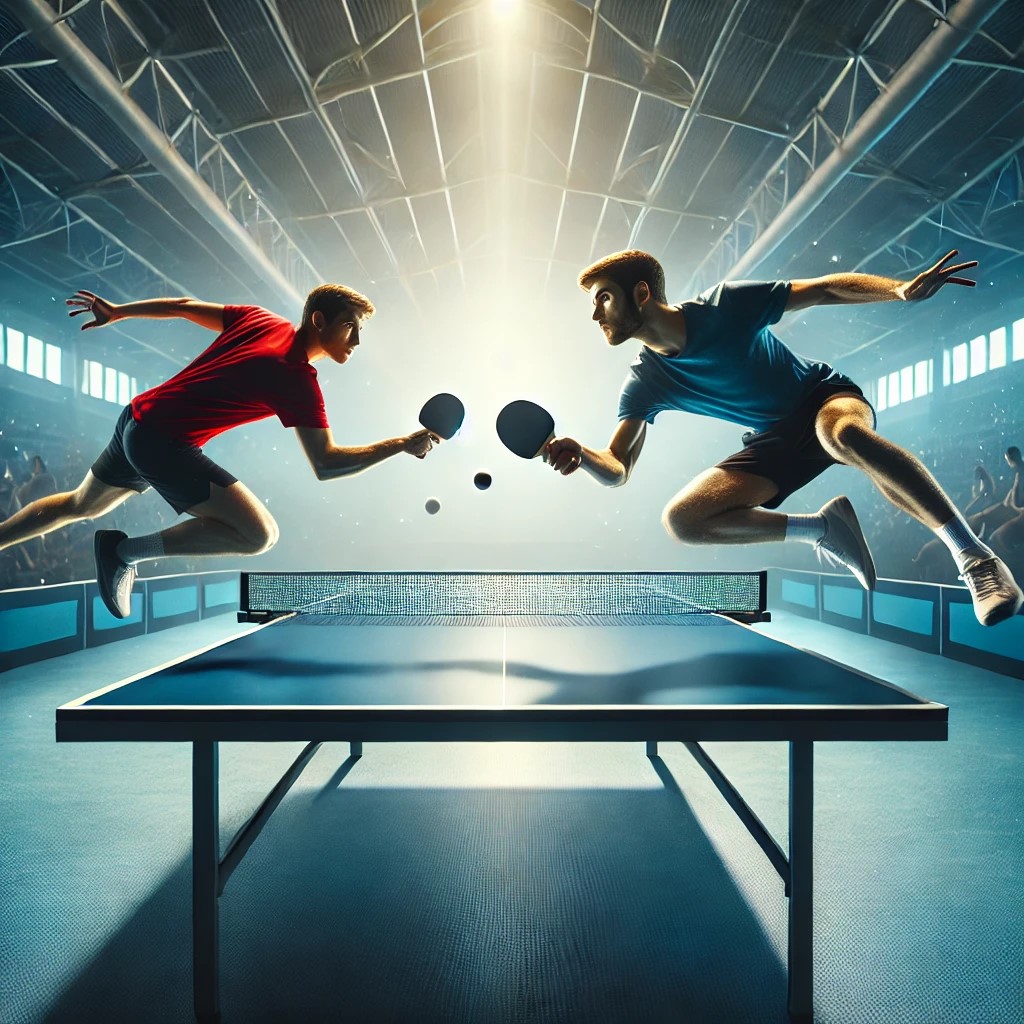Ping Pong
The Dynamic World of Ping Pong: A Comprehensive Dive into its Origins, Popularity, and Influence

Ping Pong, a sport both familiar and underestimated, has transcended generations and borders to become one of the most widely played games globally. From humble beginnings in Victorian England, Ping Pong has developed into a competitive sport with millions of enthusiasts worldwide. Its blend of agility, skill, and strategy has made it popular in homes, schools, and professional arenas. Whether played casually in a basement or on the global stage, Ping Pong offers an engaging experience for all levels of participants. This blog post explores the intricate details of this fascinating sport, including its history, global popularity, rules, and profound social and political influence.
The Origins and History of Ping Pong
Ping Pong, also known as table tennis, originated in England during the late 19th century. Its origins are often attributed to the upper class as a parlor game, designed to mimic lawn tennis. In fact, early versions of the game were played on dining tables, with books serving as nets and makeshift paddles made from cigar box lids. The ball, initially a champagne cork or rubber, eventually evolved into the lightweight plastic version we know today.
As the game gained popularity, manufacturers began producing standardized equipment. In 1901, the name “Ping Pong” was trademarked by the British firm J. Jaques & Son Ltd., who also sold equipment under this brand. The distinct name was inspired by the sound the ball made as it bounced back and forth across the table. Around the same time, the game spread rapidly to other countries, including the United States, Japan, and India, where it found enthusiastic players.
By the 1920s, formal rules were established, and table tennis clubs were formed in several countries. The International Table Tennis Federation (ITTF) was founded in 1926, marking the beginning of competitive international Ping Pong. Since then, the game has continued to evolve, with equipment innovations and rule adjustments shaping its modern form.
Global Popularity of Ping Pong
Ping Pong is now a global phenomenon, played by millions around the world. In countries such as China, Japan, South Korea, and Germany, the sport enjoys immense popularity, with professional leagues and state-of-the-art training facilities. China, in particular, has a deep-rooted connection to Ping Pong, both as a recreational activity and as a national sport. China has dominated the world stage in table tennis, winning numerous Olympic medals and world championships. The country invests heavily in Ping Pong programs for youth, which explains the high level of skill seen among Chinese players.
In Europe, Ping Pong has also gained a significant following, particularly in countries like Germany, Sweden, and Austria. These nations have strong leagues and often produce top-tier players who compete on the global stage. In addition, several European cities host major international tournaments, attracting the best players from around the world.
Meanwhile, the sport has become increasingly popular in the United States, with recreational Ping Pong leagues sprouting in major cities. Although the U.S. has not historically been a dominant force in professional table tennis, its amateur scene continues to grow, driven by a mix of casual enthusiasts and competitive players. Ping Pong is also played extensively in India, Nigeria, and other parts of Africa, where it is often promoted in schools and communities.
Ping Pong in Schools and Youth Programs
One reason Ping Pong has become so widespread is its accessibility. The sport requires minimal space and equipment, making it ideal for schools and youth programs. In many countries, Ping Pong is introduced to children at an early age, often as part of physical education programs. The game helps develop hand-eye coordination, quick reflexes, and strategic thinking, all of which are valuable skills for young athletes.
In China, where Ping Pong holds a special place in the culture, the sport is integrated into the school system. Young players are scouted early and trained rigorously in specialized academies. These programs are designed to produce world-class athletes, which is why China continues to dominate the sport at the professional level.
European countries like Germany and Sweden have similar programs, though perhaps not as intensive as those in China. Clubs and schools frequently offer Ping Pong as a regular activity, encouraging students to participate in local competitions. The sport’s inclusive nature makes it a favorite in schools, as children of all ages and skill levels can enjoy playing.
In the United States, it is making inroads into youth sports programs as well. Schools and community centers increasingly offer table tennis as an option for after-school activities. Several organizations, such as USA Table Tennis, work to promote the sport among young players, organizing youth leagues and tournaments nationwide.
Professional Leagues and Tournaments
At the professional level, Ping Pong is an intensely competitive sport. Numerous leagues exist across the world, drawing both seasoned players and rising stars. The International Table Tennis Federation (ITTF) remains the primary governing body for international competitions, overseeing events like the World Table Tennis Championships and the Table Tennis World Cup.
The Chinese Super League is one of the most prestigious professional Ping Pong leagues globally. It features some of the best players in the world, many of whom have won multiple international titles. The league operates in a format similar to that of other professional sports leagues, with teams representing different regions of China.
Europe has its own array of professional Ping Pong leagues, with Germany’s Bundesliga and the Swedish Table Tennis League being among the most prominent. These leagues regularly produce elite players who compete on the international stage. European clubs frequently participate in cross-border tournaments, adding to the global nature of the sport.
In the U.S., while professional Ping Pong is not as prominent as in other parts of the world, the sport has gained more visibility in recent years. The USA Table Tennis Association organizes national championships and other high-level tournaments, where top American players compete for titles. American players often participate in international competitions, contributing to the sport’s global appeal.
Political and Social Significance of Ping Pong
The significance of Ping Pong extends beyond the game itself. It has been used as a tool for diplomacy, particularly during the Cold War. The most famous example of Ping Pong diplomacy occurred in 1971 when the U.S. table tennis team was invited to China. This historic event helped thaw relations between the two countries, which had been strained for decades. The subsequent meeting between U.S. President Richard Nixon and Chinese leader Mao Zedong marked a turning point in U.S.-China relations.
It has continued to play a role in fostering international cooperation. For instance, the ITTF often works with organizations to promote the sport in developing countries. These efforts help bring Ping Pong to underserved communities, using the game as a means of social development and education.
Additionally, Ping Pong is often praised for its inclusivity. People of all ages, genders, and physical abilities can participate, making it a truly accessible sport. The Paralympic Games include table tennis as a major event, highlighting the sport’s adaptability for athletes with disabilities. Ping Pong’s global reach and inclusive nature have made it a vehicle for social change, helping to break down barriers and bring people together.
Rules of Ping Pong
Though simple to learn, Ping Pong has a set of rules that ensure fair play and competition. Here is a breakdown of the most important rules:
1. The Game
Ping Pong is played as either singles or doubles. In singles, one player competes against another, while doubles feature two teams of two players each. The objective is to score points by hitting the ball over the net and into the opponent’s side of the table in such a way that they cannot return it.
2. Scoring
A standard game of Ping Pong is played to 11 points. To win, a player must have at least a two-point lead. If the score reaches 10-10, the game continues until one player achieves a two-point advantage. In doubles, the same rules apply, though players must alternate hitting the ball.
3. Serving
A serve in Ping Pong must be made by tossing the ball at least six inches into the air and striking it so that it first bounces on the server’s side of the table and then on the opponent’s side. Players alternate serves every two points, except in deuce situations, where the serve alternates after every point.
4. Rallying
After the serve, players engage in a rally, hitting the ball back and forth across the net. The ball must only bounce once on each side of the table before being returned. Players lose points if they fail to return the ball or if they hit it out of bounds.
5. Doubles Play
In doubles, players must alternate hits with their partners. The serve also alternates between teams after every two points. This requires a high level of coordination and communication between teammates.
6. Legal and Illegal Hits
A legal hit must involve the ball striking the table on the opponent’s side after passing over the net. If a player hits the ball into the net or off the table without it touching the opponent’s side, they lose the point. However, a ball that strikes the edge of the table is considered in play.
7. Net Interference
If the ball touches the net during a serve but lands correctly on the opponent’s side, the serve is repeated, and no points are awarded. However, if the ball touches the net during regular play and lands correctly, the game continues.
These rules form the basis of both casual and competitive Ping Pong, ensuring a structured yet enjoyable game.
Conclusion
Ping Pong is more than just a recreational activity; it’s a sport rich with history, global significance, and competitive intensity. From its origins in England to its rise as a global sport, Ping Pong has captured the hearts of millions. Its ability to transcend cultural and political boundaries has made it a unique force in the world of sports. Whether played casually among friends, professionally in leagues, or as a tool for diplomacy, Ping Pong continues to be a game that brings people together. Its straightforward rules and inclusive nature ensure that anyone, regardless of age or skill level, can enjoy this fast-paced and dynamic sport.
As Ping Pong continues to grow globally, its influence both on and off the table will undoubtedly expand. The sport’s accessibility, combined with its competitive spirit, ensures that it will remain a beloved pastime and a serious athletic pursuit for generations to come. So, the next time you pick up a paddle, remember that you are participating in a game with a rich legacy and a bright future.






